[Mark Mullins] is working on a project called Quamera: a camera that takes video in every direction simultaneously, creating realtime 3D environments on the fly.
[Mark] is using 26 Arducams, arranging them in a rhombicuboctahedron configuration, which consists of three rings of 8 cameras with each ring controlled by a Beaglebone; the top and bottom rings are angled at 45 degrees, while the center ring looks straight out. The top and bottom cameras are controlled by a fourth Beaglebone, which also serves to communicate with the Nvidia Jetson TX1 that runs everything. Together, these cameras can see in all directions at once, with enough overlap for provide a seamless display for viewers.
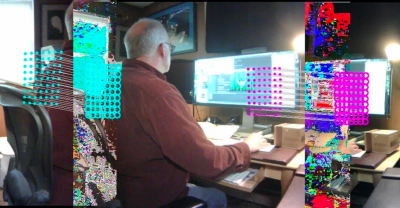 In the image to the right, [Mark] is testing out his software for getting the various cameras to work together. The banks of circles and the dots and lines connecting to them represent the computer’s best guess on how to seamlessly merge the images.
In the image to the right, [Mark] is testing out his software for getting the various cameras to work together. The banks of circles and the dots and lines connecting to them represent the computer’s best guess on how to seamlessly merge the images.
If you want to check out the project in person, [Mark] will be showing off the Quamera at the Dover Mini Maker Faire this August. In the meantime, to learn more about the Jetson check out our thorough overview of the board.

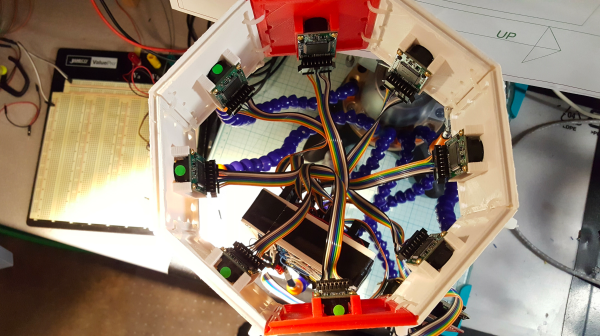
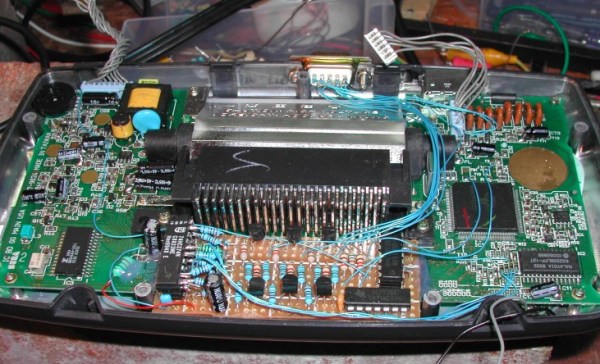
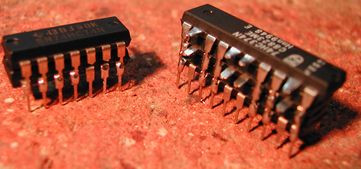 [EvilTim] first designed a circuit using discrete ’74 series logic which would convert the LCD drive signals to SCART RGB. Of note is the construction technique used in this circuit. A tower of three 74HC374 chips allows [EvilTim] to create R, G, and B outputs without the need for a complex circuit board.
[EvilTim] first designed a circuit using discrete ’74 series logic which would convert the LCD drive signals to SCART RGB. Of note is the construction technique used in this circuit. A tower of three 74HC374 chips allows [EvilTim] to create R, G, and B outputs without the need for a complex circuit board.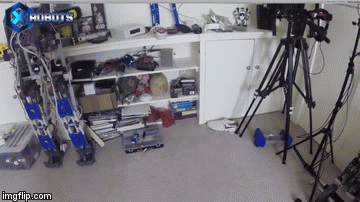


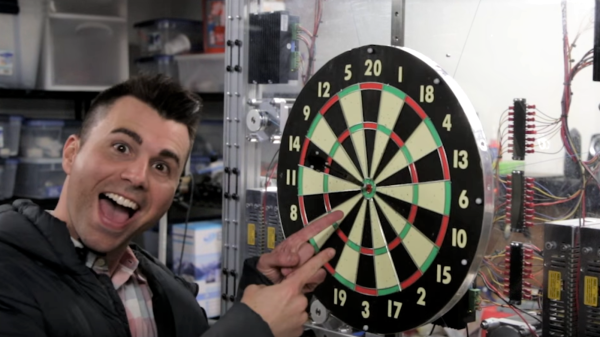
 In fairness, what [Mark Rober] started three years ago seemed like a pretty simple task. He wanted to build a rig to move the dartboard’s bullseye to meet the predicted impact of any throw. Seems simple, but it turns out to be rather difficult, especially when you choose to roll your own motion capture system.
In fairness, what [Mark Rober] started three years ago seemed like a pretty simple task. He wanted to build a rig to move the dartboard’s bullseye to meet the predicted impact of any throw. Seems simple, but it turns out to be rather difficult, especially when you choose to roll your own motion capture system.









